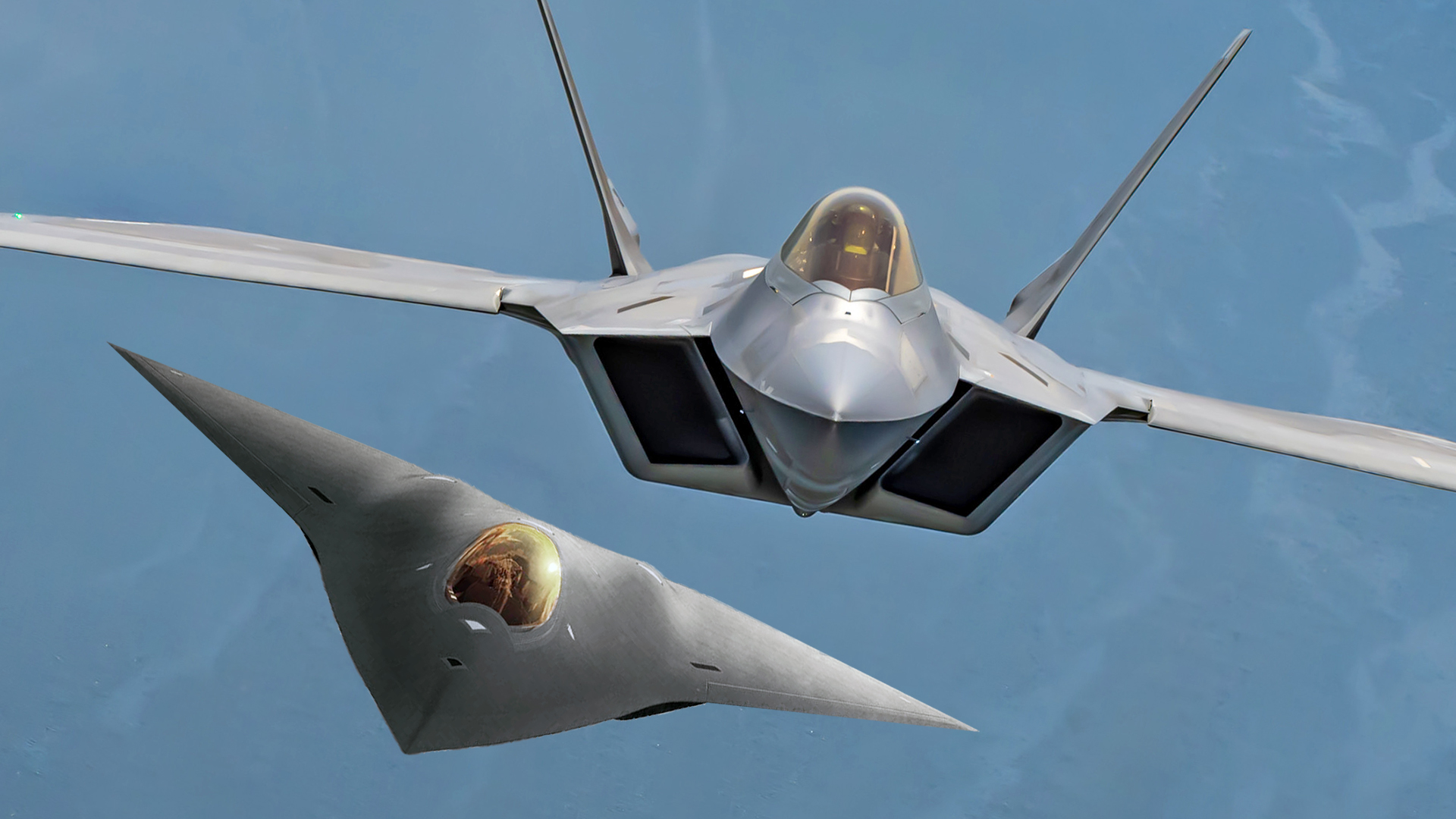The Pentagon’s Fiscal Year 2023 budget request documents provide interesting details that may help add a bit of explanation to the sudden jump in unignorable testing of new features on the F-22 Raptor, all of which The War Zone was first to report on. The documents describe how the F-22 is being used as something of a test surrogate for technologies that are being developed under the Next Generation Air Dominance (NGAD) program, as well as adopting technologies that have been designed for NGAD, but can be fielded early on the F-22 to meet emerging threats.
NGAD is much more than a ‘new fighter.’ In fact, calling anything it produces a fighter probably isn’t even that accurate. It is a broad initiative that aims to create a ‘system of systems’ that will ensure U.S. tactical air dominance for the decades to come. It includes a highly adaptable and optionally manned platform that possesses substantial range, enhanced survivability, and next-generation modular sensor capabilities. It also supposedly developing companion unmanned aircraft and weapons, as well as a high-end networking architecture to connect them all together. Beyond these top-end items, NGAD includes a series of studies and development efforts needed to substantiate and bring to life the technologies required to underpin the NGAD entire ecosystem. Some sort of demonstrator for NGAD has been flying for some time now, although what exactly it includes remains a mystery.
The documents read, in part, as follows under the Advanced Technology Development section of the F-22 Squadrons line item:
Technology maturation, risk reduction, studies, demonstrations and prototypes of classified F-22 development efforts. The F-22 Advanced Technology Development (ATD) program is conducted using a rapid acquisition construct leveraging commercial best practices such as agile and lean. This allows the F-22 Raptor enterprise to develop, test, and field software/hardware from multiple programs (product lines) using a scheduled cadence for capabilities as they mature.
The F-22 program attempts to maximize efficiency by utilizing technology transfer both to the Next Generation Air Dominance (NGAD) portfolio, and from the NGAD portfolio based on emerging threats, AF priorities, and development pipeline capacity. Incorporating NGAD developed technologies will include developing, integrating, and testing capabilities on the F-22 weapon system.
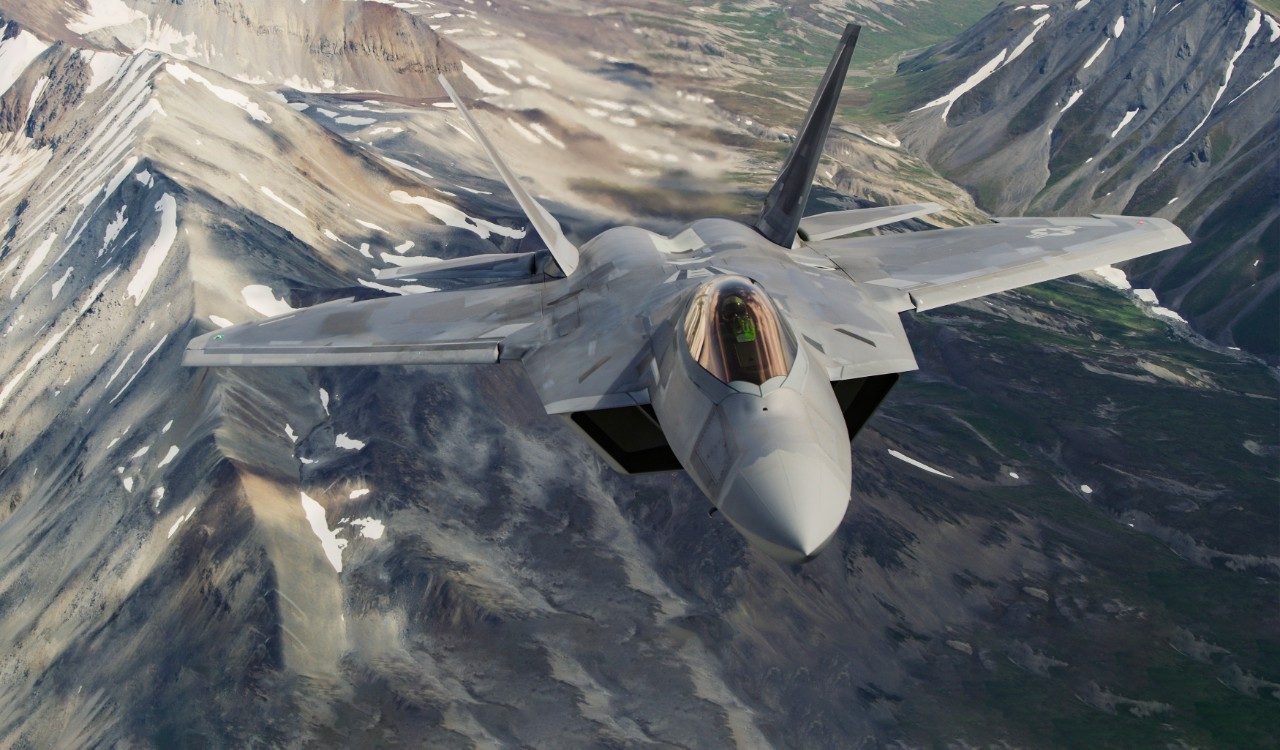
So, technological development is going to flow both ways. Not only is the F-22 being used to trial NGAD technologies, but, when deemed appropriate, the F-22 will adopt technologies that have been developed under the program. In theory, this will speed these capabilities to the frontline long before the aircraft being developed under NGAD can deploy them while also helping to more rapidly develop and ‘de-risk’ capabilities that will eventually be leveraged by that broader effort.
This is quite telling as, according to our abbreviated review, no other aircraft section in the budget, including the F-35’s, had any language of this nature. It also may comport with some of the highly peculiar modifications we have seen in recent months on test and tactics development-oriented F-22s. These include now no less than three types of exotic metallic-like coatings that are thought to work to reduce the F-22’s signature, specifically in the infrared spectrum, while having a low negative impact or even shrinking the jet’s notoriously small radar signature. It’s also worth noting we have seen these types of coatings on F-117s and even a Navy F-35 in recent months, as well, but the F-22 seems to be really pushing the capability into the operational test environment and some of the coatings are remarkably intricate mosaic-like arrangements. You can read all about them here.
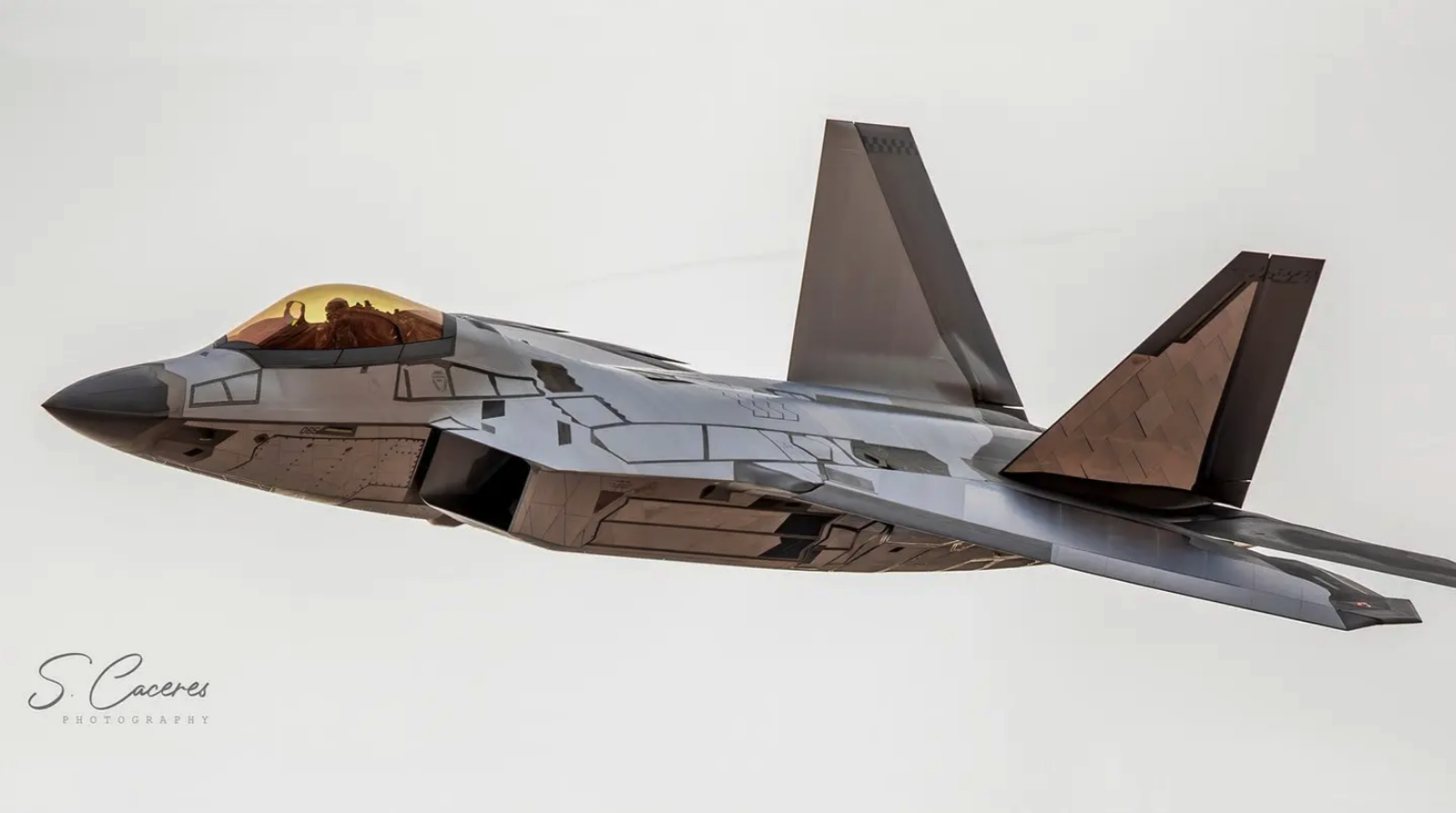
An F-22 test jet also emerged earlier this year with never before seen low-observable pods under its wings. Our analysis is that these are most likely related to the long-awaited infrared search and track (IRST) capability that is finally being prioritized for the Raptor, as well as possibly enhanced electronic warfare (EW) capabilities. Both of these initiatives are mentioned in the budget documents. You can read our exclusive report on these mysterious pods here.
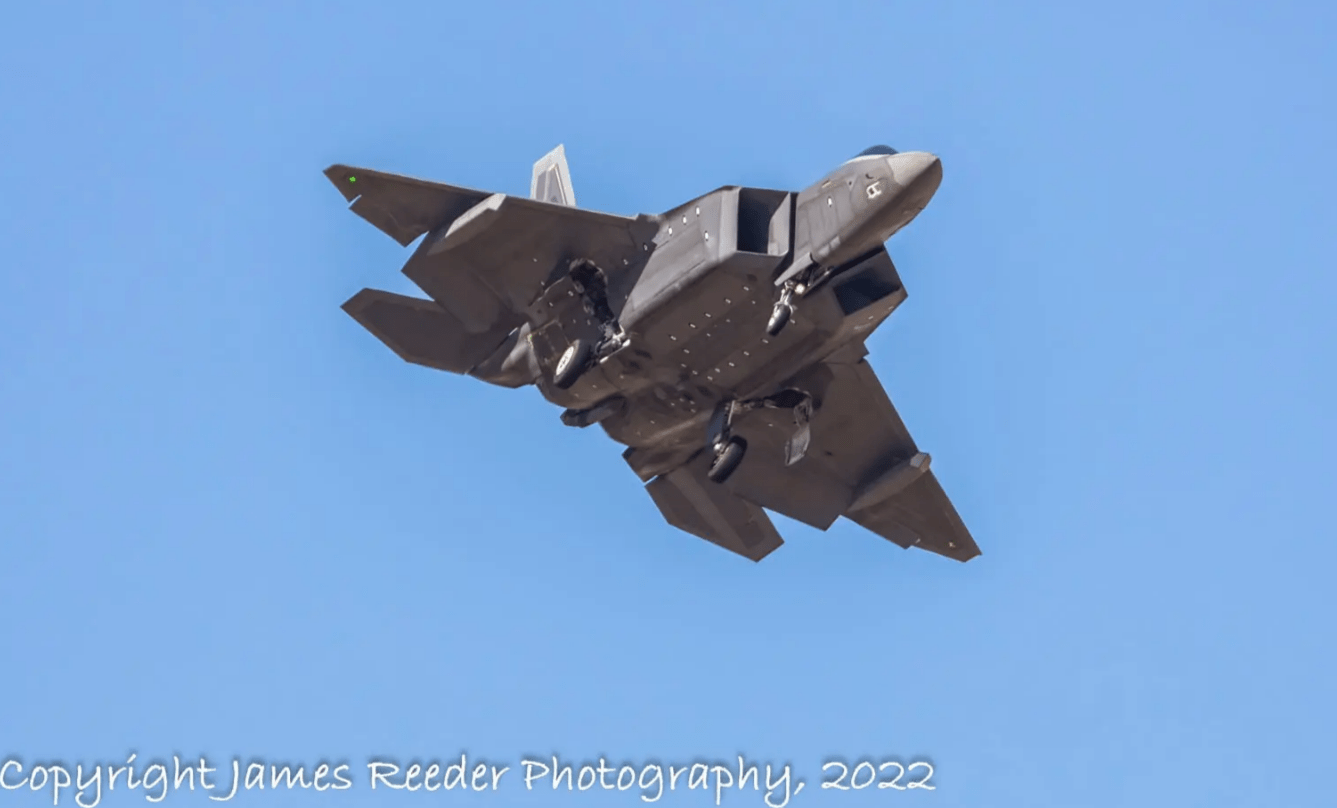
While continuing EW upgrades were mentioned in passing, the F-22’s IRST development got substantial placement in the budget documents:
Description: As part of the F-22 Rapid Prototyping Middle Tier Acquisition (MTA) program, previously known as the Capability Pipeline, Sensor Systems improves sensor capabilities to maintain air superiority and preserve first look, first shot, and first kill capability. This includes developing and maturing advanced Infrared Search & Track (IRST) sensor capabilities to provide the F-22 with an asymmetric sensing advantage against potential adversaries while continuing to deliver on its unmatched maneuverability.
The F-22 Sensor System programs utilize a rapid acquisition construct leveraging commercial best practices such as agile and lean. This allows the F-22 Raptor enterprise to develop, test, and field software/hardware from multiple programs (product lines) using a scheduled cadence for capabilities as they mature.
FY 2022 Plans:
Continue Sensor Enhancements software and hardware development for future fleet release. Continue purchase of test assets, continue development environment standup, lab/system/airframe integration, and logistics planning. Continue technology maturation and risk reduction efforts for multiple development activities.
FY 2023 OCO Plans: N/A
FY 2022 to FY 2023 Increase/Decrease Statement:
The F-22 Sensor System utilizes a rapid acquisition construct leveraging commercial best practices such as agile and lean. This allows the F-22 Raptor enterprise to develop, test, and field software/hardware from multiple programs (product lines) using a scheduled cadence for capabilities as they mature.
Decrease of $78.504M from FY22 attributable to the completion of test asset purchases.
While we cannot say for certain if either of these highly visible features on test-related F-22s are connected to NGAD, it’s very possible they are. With this and the language in the budget documents in mind, we are probably going to see more exploration and testing of this kind on the Raptor fleet in the near future.
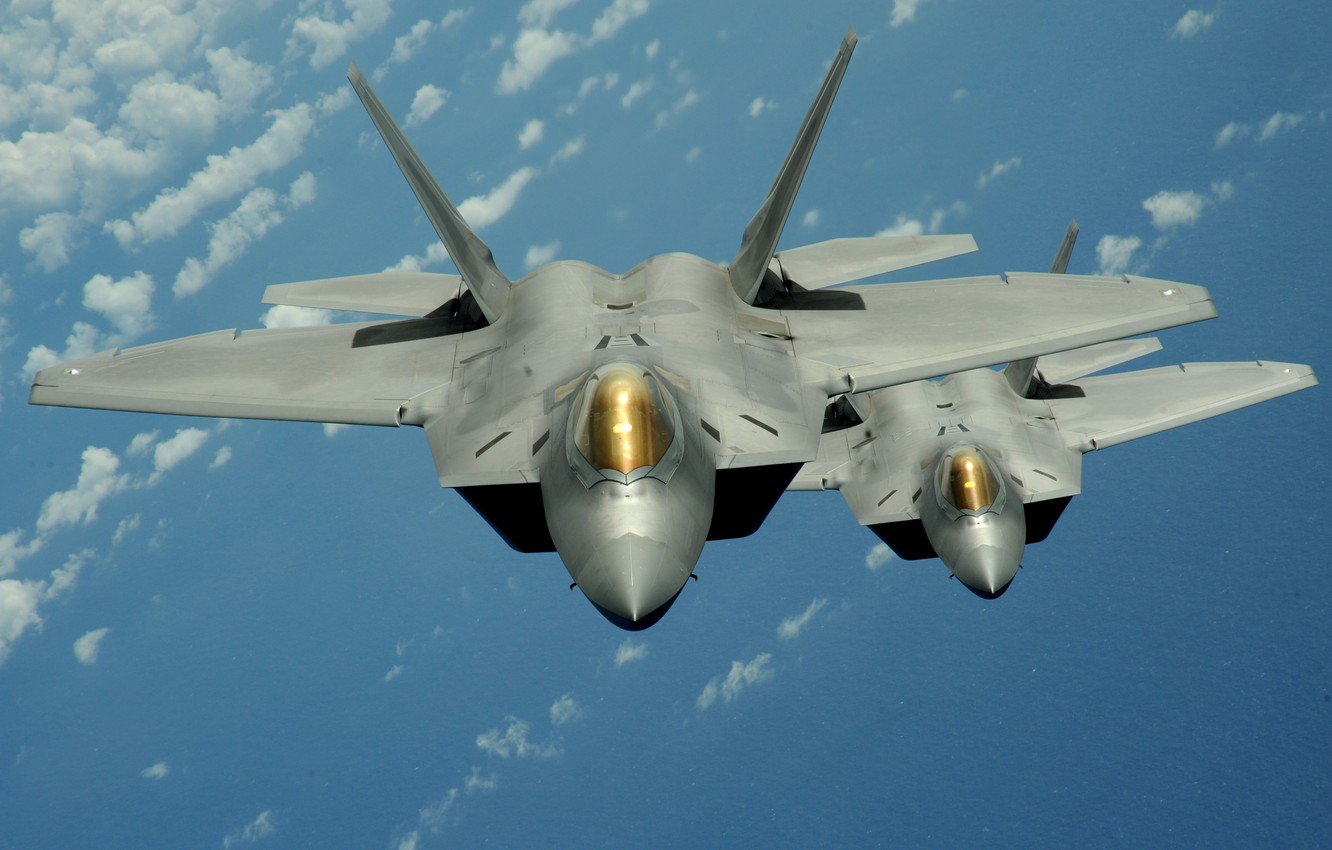
Among a slew of other, less exotic enhancements slated for the F-22 fleet, which includes everything from navigation to radar upgrades, all of which really are not unexpected, one major capability listed in the documents is — “low drag tanks and pylons.”of other, less exotic enhancements slated for the F-22 fleet, which includes everything from navigation to radar upgrades, all of which really are not unexpected, one major capability listed in the documents is — “low drag tanks and pylons.”
The budget entry reads:
The F-22 Low Drag Tank and Pylon (LDTP) capability is critical to maintaining Air Superiority in the joint fight and combating emerging threats. Due to the advancement of adversary technologies in detection and emergence of fighter, cargo, and refueling platforms increasing engagement ranges, it is critical to future mission execution and success to provide the Raptor with an increased range capability while maintaining own- ship survivability.
The F-22 LDTPs are advanced technological designs providing increased persistence and range while maintaining lethality and survivability. The low drag tanks are intended to reduce drag, facilitate supersonic flight with external tanks and extend the range of the F-22.
The pylons are equipped with smart rack pneumatic technology to accurately control ejection performance and smooth wind swept surface for minimum drag without store. LDTP risk reduction activities are captured under the Advanced Technology Development (ATD) major thrust. Documentation of the development and integration components as part of the Engineering, Manufacturing, and Development (EMD) program will be captured under the LDTP major thrust.
It continues:
FY 2022 Plans:
B. Accomplishments/Planned Programs ($ in Millions)
Continue technology maturation and perform risk reduction tasks to support software integration, flight testing, and fielding. These tasks are captured within the ATD major thrust for FY22. The primary focus of this effort will be to accomplish tasks to include, but not limited to; procurement of test assets, flight test program/matrix development, software and hardware integration.
FY 2023 Base Plans:
Continue technology maturation and risk reduction projects while transitioning to EMD, where operational testing will be accomplished in parallel with developmental testing efforts. Accomplish software and hardware development for future fleet release to support both old and new pylon/tank configurations.
FY 2023 OCO Plans: N/A
FY 2022 to FY 2023 Increase/Decrease Statement:
Increase of $22.000M from FY22 to FY23 reflects the transition from risk reduction activities captured under the ATD major thrust to the beginning of EMD in FY23.
This low-drag tanks and pylons initiative is quite interesting as it is also part of the ATD, which also is connected to the NGAD technologies test and integration arrangement. The F-22 has flown operationally with 600-gallon fuel tanks for years, as well as pylons that can be jettisoned with them. Part of the F-22 program developed this system. While losing the tanks and pylons in flight would still leave the F-22 with a degraded radar cross-section — the connection points and plumbing would still be partially exposed — it would make the jet much harder to spot on radar compared to having the tanks or even just the pylons still be attached. This new initiative looks to integrate a more efficient tank design and a pylon that leads to very little, if any, radar cross-section disruption compared to a ‘clean’ F-22 once the tanks and pylons are jettisoned.
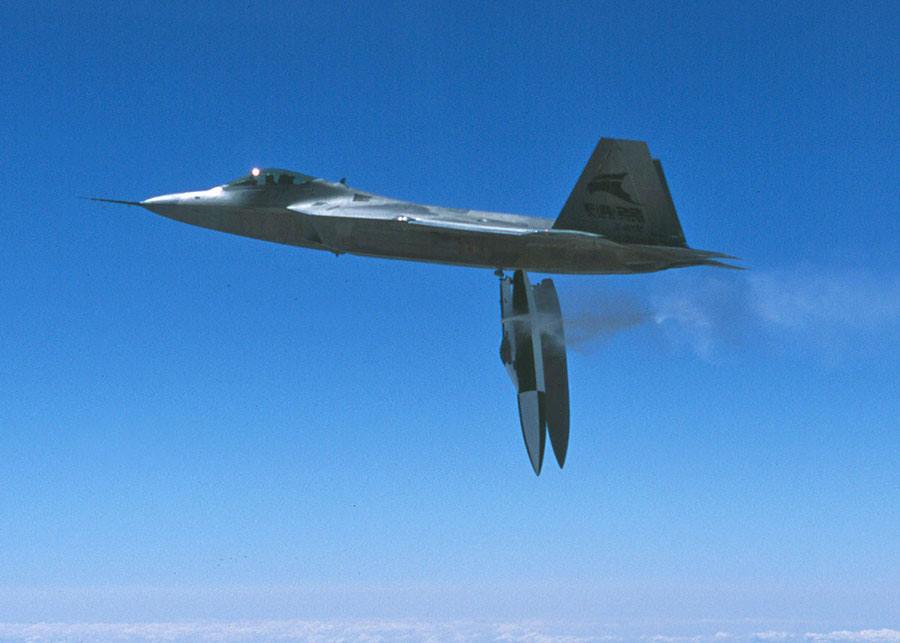
The F-22’s range has always been its biggest weakness and external tanks would be a critical component for executing combat operations over great distances of the Pacific against a major opponent — China. Getting the F-22 more aerodynamically efficient tanks with pylons that can be jettisoned without significantly disrupting the jet’s radar-evading capabilities would be a major advantage and would help keep the F-22 relevant. This technology would also likely be spiraled into NGAD platforms, namely the manned aircraft, that is being designed to fight more independently of refueling assets over much larger distances.
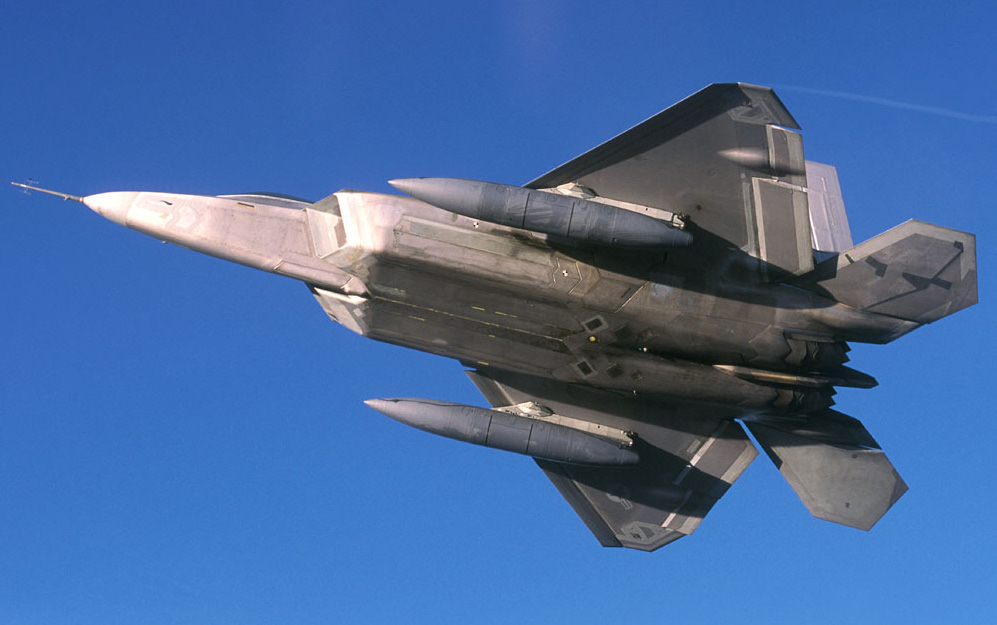
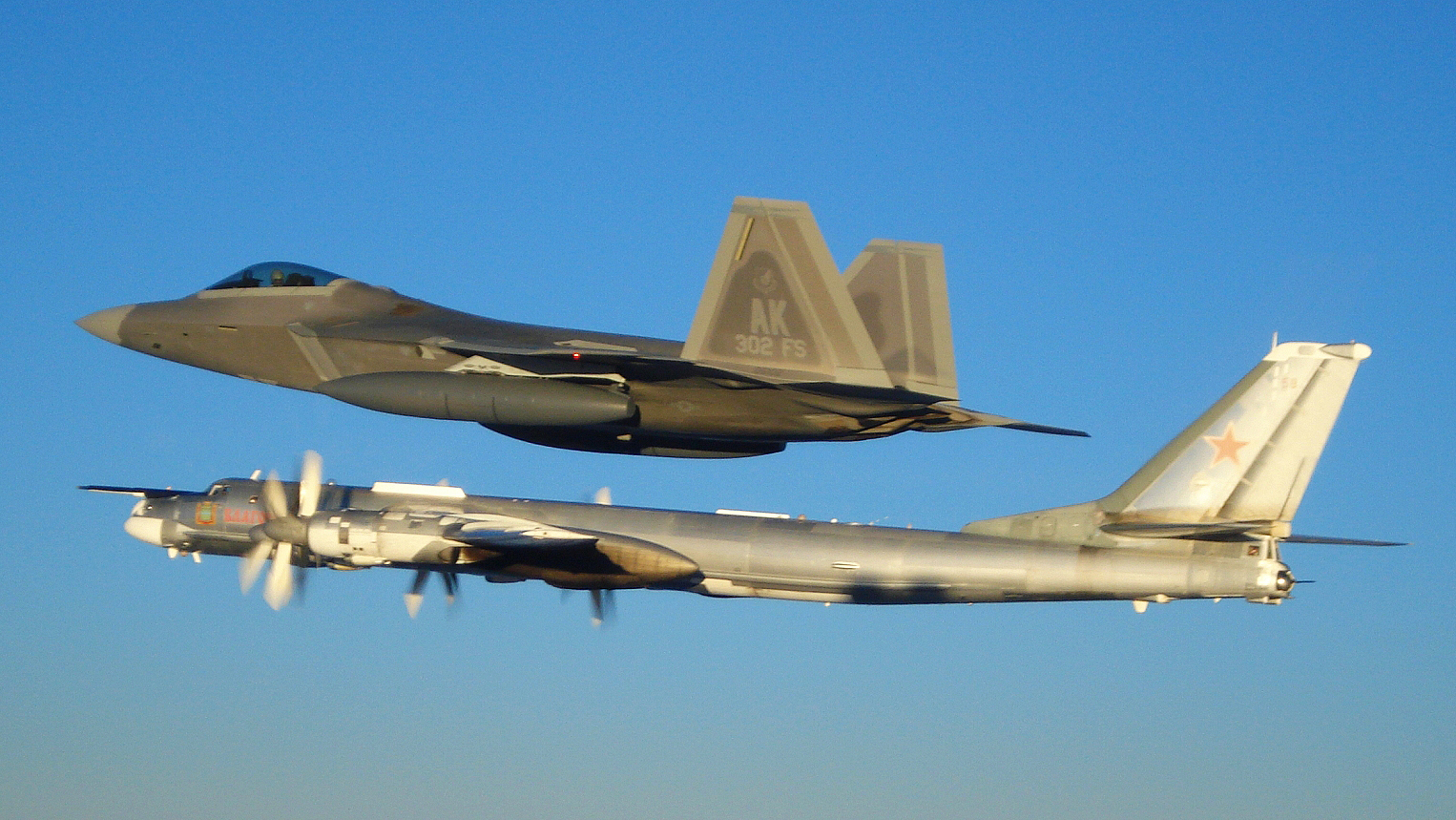
As for NGAD itself, we really didn’t get much now detail about it from this year’s budget, but what we do get is a major clue that something major occurring in Fiscal Year 2025, where the program’s budget nearly doubles and continues at that rate from then on.
The NGAD budget entry reads:
Next Generation Air Dominance (NGAD) is a portfolio of technologies enabling Air Superiority for the Joint Force in the most challenging operational environments.
The NGAD program is directed by Joint Requirements Oversight Council Memorandum (JROCM) 043-13 and CSAF approved Air Superiority Enterprise Capability Collaboration Team (ECCT) Flight Plan. The program matures technology and reduces risk through development, integration, and test activities. Key NGAD attributes include enhancements in survivability, lethality, persistence, and interoperability across a range of military operations. Program activities will also include the employment of digital acquisitions through the application of digital engineering, agile software development, and open systems architectures. Funding provides program management support, operational concept exploration, technology studies, multi-domain integration assessments, operational and system architecture development, maturation and risk reduction of air superiority related technologies, including weapons systems and integrated system concept development and demonstration. NGAD technologies are available to other DoD systems based on emerging threats, AF priorities, and development capacity. DoD systems incorporating NGAD technologies will include development, integration, and testing of capabilities.
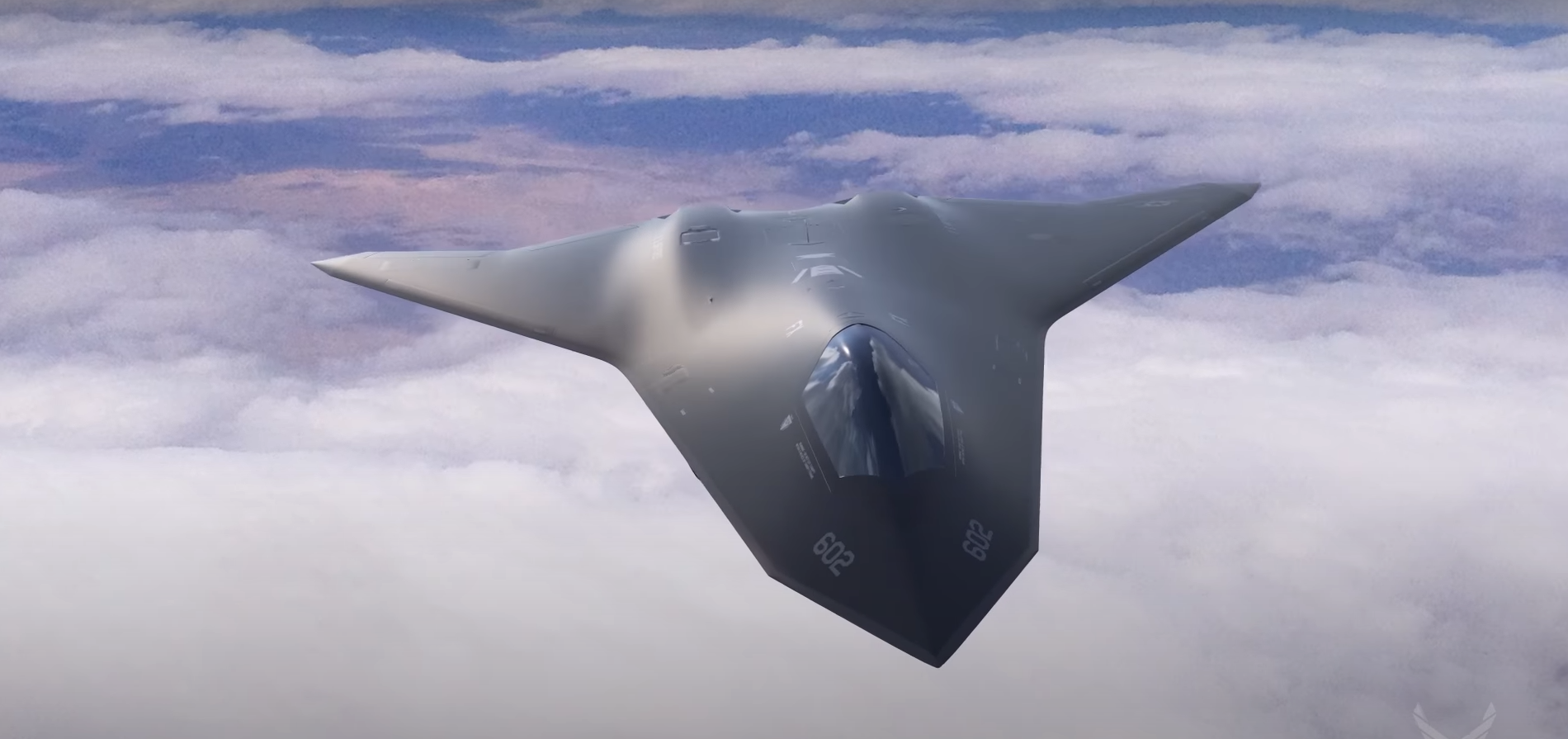
Finally, there is one other interesting thing in the F-22’s section of the budget. Somehow this bizarrely colorful paragraph was inserted seemingly out of nowhere:
This paragraph is a tribute to all of the people that have poured their heart and soul into designing, building, flying, funding, modernizing, and sustaining the F-22 Baby Raptor throughout its years of service. It has steadily flown missions and broken records, known and unknown around the world since it began flying 25 years ago. It is the sheepdog, the watcher in the night that keeps our adversaries at bay, and it wouldn’t be possible without the entire team pushing the very limit of possibility every single day.
It isn’t clear how or why this was part of the F-22 Squadrons line item, but it may be because the F-22 program is now in the back half of its life. The USAF plans on getting rid of it entirely in the 2030s once NGAD is ready and the already tiny fleet of F-22s is now slated for a major cut if the Air Force gets its way. The 2023 budget proposal plans to slash the F-22 force. Here’s the basic plan:
- The Air Force is seeking to retire 33 F-22A Raptor stealth fighters.
- This would reduce the total F-22A fleet size from around 186 to some 153.
- This is part of a larger plan that would include scrapping a previous proposal to relocate Raptors forced out of Tyndall Air Force Base in Florida by Hurricane Michael in 2018 to Joint Base Langley-Eustis (JBLE) in Virginia. Instead, the remaining aircraft would be redistributed across other units still flying these jets at other locations, including the existing 1st Fighter Wing based at Langley JBLE.
- The jets on the chopping block are all older Block 20 jets and are largely relegated to training and other non-combat duties already.
- The service says that it would take $1.8 billion over the next eight years to bring those jets up to the latest standard, funds that it wants to instead spend on modernizing F-35As and upgrading other F-22As ($1.5 billion) and on the development of advanced combat aircraft under the Next Generation Air Dominance (NGAD) program ($300 million).
- The Air Force has already said that it wants to divest the entire Raptor fleet in the coming years.
These 33 F-22s, none of which are combat coded, would likely be cannibalized to help prop up the more capable F-22 fleet that is left over. The type is challenging to support as it is, so these donor aircraft would solve some problems in that regard, at least for a while. But doing so means training and other tasks will now be foisted onto the front-line fleet, which will stress the small cadre of what would be probably around 150 airframes, even more.
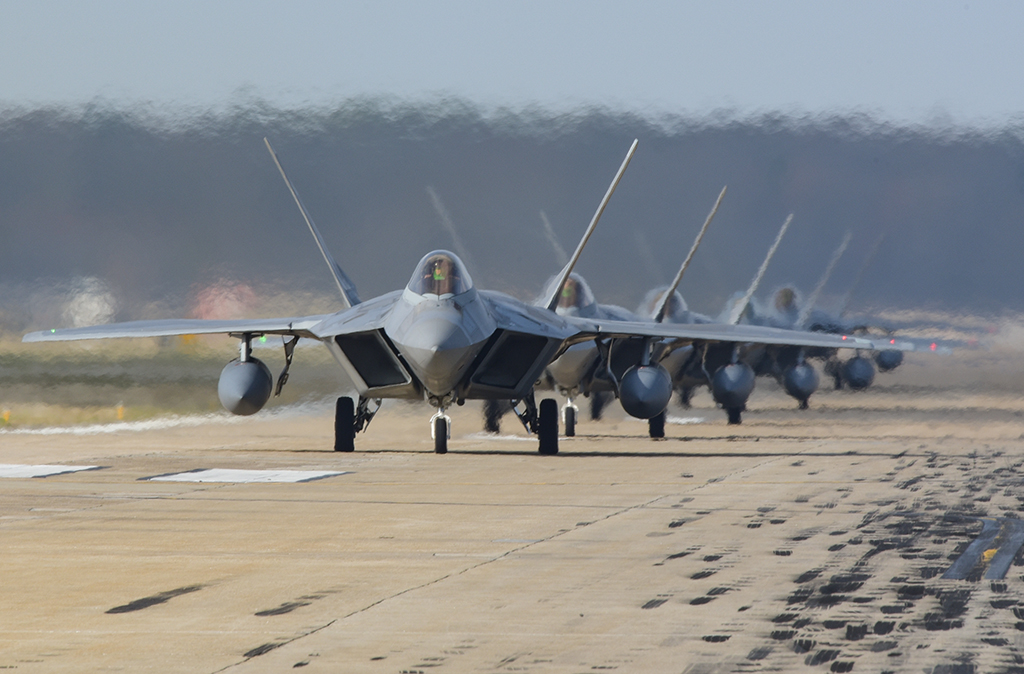
The bottom line here is that a clear viewpoint is emerging here. The Air Force wants to bolster a smaller fleet of F-22s with upgrades by reprogramming money saved from retiring some of the existing fleet. In a way, this would make the F-22 everything it was promised to be (like finally getting an IRST) and more, while also using some of those initiatives and the remaining force to help develop its NGAD enterprise, and even flow other NGAD technologies back into the Raptor fleet. This, it seems, is hoped to be enough to keep the F-22 fully relevant until NGAD can be delivered.
This is far from a low-risk strategy, especially choosing to retire 33 of what is already a small and very expensive to operate force, but it should deliver a more effective Raptor. Then again, with a more capable F-22 available, one could argue it would be worth upgrading those 33 F-22s to the latest configuration to take advantage of these developments without slashing the already truncated force. Seeing as the F-22 has a mission-capable rate of around 50% in peacetime, more airframes would definitely come in very handy during a major conflict.
At the same time, this is another signal that the USAF is going all-in on NGAD, including sacrificing some of its marquee fighters to ensure that the technology gestates fast enough so that the shrinking F-22 force can make it to its final bow when NGAD is finally waiting in the wings to take center stage. Congress has been skeptical about the USAF betting so heavily on NGAD in the past. We could see this debate reignite now that the force wants to cut F-22s on top of it.
Regardless, it’s now clear that the two programs — F-22 and NGAD — are tied directly together, for better or worse.
Editor’s Note: This story was published on April 25, 2022, but a site-related issue subsequently led to a change in the timestamp.
Contact the author: Tyler@thedrive.com
